Onshore and Offshore Well Completion Processes
The process of well completion is a critical phase in the lifecycle of oil and gas wells. Whether the wells are located onshore or offshore, the completion process ensures that they are ready to produce hydrocarbons safely and efficiently. This article will explore the key aspects of onshore and offshore well completion processes, the technologies used for different environments, and recent advances in well completion technologies.
Onshore Well Completion Process
The onshore well completion process is a series of steps designed to prepare a well for the safe and efficient production of hydrocarbons. After drilling reaches the target reservoir, the completion process begins, ensuring the well is equipped for optimal performance. The key steps involved in the onshore well completion process are as follows:
- Casing and Cementing: Once the drilling reaches the desired depth, steel casing is inserted into the wellbore to provide structural integrity and isolate the well from surrounding geological formations. Cement is then pumped down the well and up around the outside of the casing to secure it in place. This step prevents fluid migration between different subsurface layers and protects groundwater.
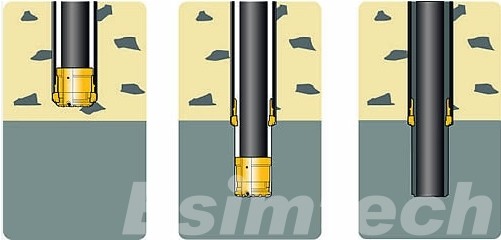
- Perforation: After the casing and cementing are complete, the next step is to perforate the casing and the surrounding reservoir rock. Perforation is performed using perforating guns, which are lowered into the wellbore and fired to create small holes in the casing and cement. These holes allow hydrocarbons to flow from the reservoir into the wellbore.
- Well Stimulation: To enhance the flow of oil or gas into the well, various stimulation techniques may be employed. Hydraulic fracturing, or “fracking,” is a common method where a mixture of water, sand, and chemicals is injected at high pressure to create fractures in the reservoir rock, increasing its permeability. Another method is acidizing, where acid is pumped into the well to dissolve rock and improve fluid flow paths.
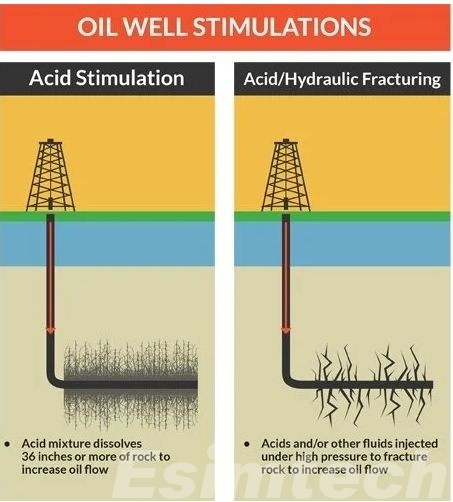
- Installation of Production Equipment: Production tubing is installed inside the wellbore to provide a pathway for the hydrocarbons to flow from the reservoir to the surface. Additionally, packers are placed around the tubing to isolate different zones in the wellbore, preventing crossflow and maintaining well integrity. Other equipment, such as flow control devices and safety valves, may also be installed at this stage.
- Completion Fluids and Clean-Up: Specialized completion fluids are used to control the well pressure and prevent damage to the reservoir during the completion process. After all the equipment is in place, the well is cleaned up to remove any drilling fluids, debris, or other contaminants that may have entered the wellbore during drilling and completion.
- Flow Testing and Production Start-Up: The final step in the onshore well completion process is flow testing, where the well is tested to assess its production capacity and ensure that all equipment is functioning correctly. Once testing is complete and the well is deemed safe and ready, it is brought into production, and hydrocarbons begin flowing from the reservoir to the surface facilities.
By following these steps, onshore well completion ensures the well is properly prepared and equipped for safe and efficient hydrocarbon production. The process is essential for maximizing recovery and maintaining the integrity of the well throughout its lifecycle.
Offshore Well Completion Process
Offshore well completion shares many similarities with onshore completion but involves additional complexities due to the marine environment. Offshore wells can be drilled from fixed platforms, floating rigs, or subsea installations, each presenting unique challenges. Here’s a look at the offshore well completion process:
- Subsea Wellhead and Casing Installation: Offshore wells often start with installing a subsea wellhead on the seabed, designed to withstand high pressures and harsh ocean conditions. Casing strings are then run and cemented in place to secure the wellbore and isolate different geological layers.
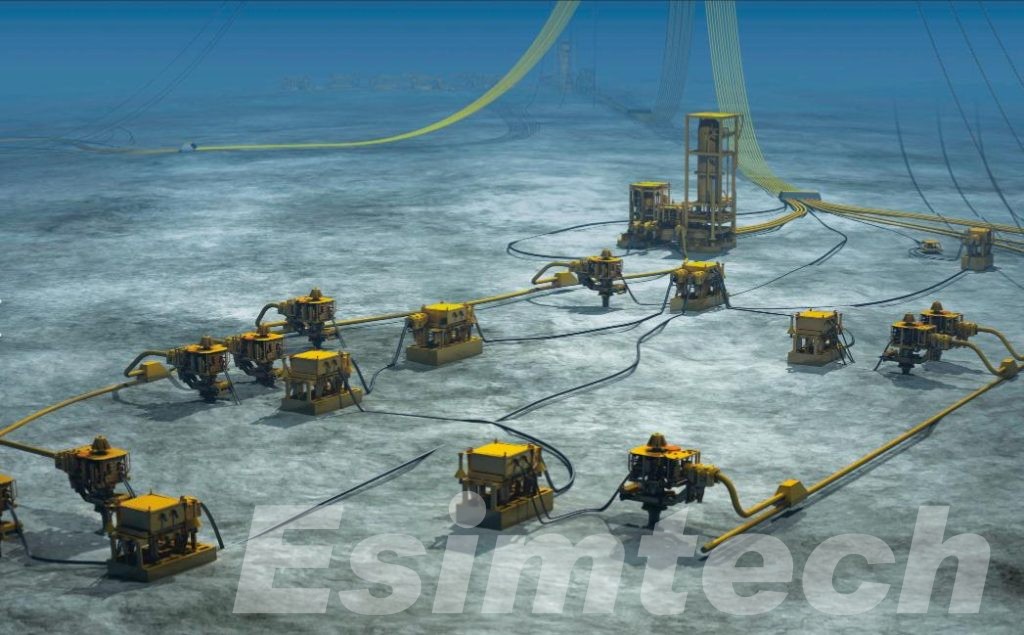
- Perforation and Well Stimulation: Perforating guns are used to create holes in the casing, allowing hydrocarbons to enter the wellbore. Offshore well stimulation may involve hydraulic fracturing or acidizing, using specialized equipment suited for subsea operations and often operated by remote-controlled vehicles.
- Completion Equipment Installation: Depending on the water depth and well location, different completion equipment is used. Subsea trees are installed on the seabed to control the flow of hydrocarbons, while dry trees are mounted on platforms above water for wells in shallower waters.
- Sand Control and Flow Assurance: To prevent sand from entering the well and ensure a smooth flow of hydrocarbons, techniques like gravel packing or sand screens are employed. Flow assurance measures, such as chemical inhibitors or heated flowlines, are also used to prevent hydrate formation and wax buildup in the cold subsea environment.
- Testing and Commissioning: Finally, the well undergoes a series of tests, including pressure and flow testing, to confirm its integrity and readiness for production. These tests ensure that all subsea and topside equipment is functioning properly and that the well can operate safely under expected conditions.
This process ensures offshore wells are safely completed and optimized for efficient production in challenging marine environments.
Well Completion Technologies for Different Environments
The choice of well completion technologies is crucial for optimizing the production of oil and gas, as well as ensuring the safety and integrity of the well. The technologies and methods employed can vary significantly depending on whether the well is onshore or offshore, as each environment presents unique challenges and requires tailored solutions to address specific operational needs.
Onshore Well Completion Technologies
Onshore well completions often utilize conventional technologies that are adapted to the geological and operational characteristics of the location. The primary considerations for onshore completions include the type of reservoir, the presence of natural fractures, and the need for stimulation to enhance production.
- Cased-Hole Completions: This is one of the most common completion methods for onshore wells. It involves running a casing string down the wellbore and cementing it in place to provide structural integrity and isolate different geological formations. Perforations are then made in the casing and cement using perforating guns to allow hydrocarbons to flow from the reservoir into the wellbore.
- Open-Hole Completions: In open-hole completions, the well is completed without cementing the casing in place across the production zone. This method is often used in wells where the reservoir rock is naturally fractured or highly permeable, allowing for direct flow into the wellbore. It is less common in onshore environments compared to cased-hole completions but is advantageous in specific geological conditions.
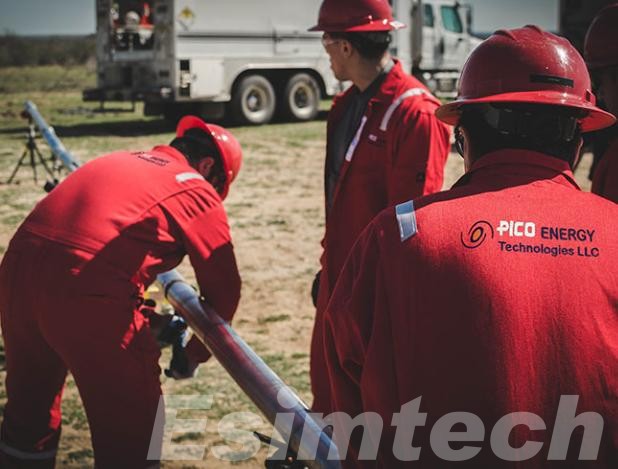
- Hydraulic Fracturing: Also known as “fracking,” this technology is widely used in onshore completions, especially in unconventional reservoirs like shale formations. Hydraulic fracturing involves injecting a high-pressure fluid mixture into the wellbore to create fractures in the reservoir rock, enhancing its permeability and allowing hydrocarbons to flow more freely. This technology has revolutionized onshore oil and gas production, particularly in North America.
- Artificial Lift Systems: In many onshore wells, especially those producing from mature fields or low-pressure reservoirs, artificial lift systems are essential to maintain production rates. Technologies like rod pumps, electric submersible pumps (ESPs), and gas lift systems are commonly employed to help lift hydrocarbons to the surface when natural reservoir pressure is insufficient.
Offshore Well Completion Technologies
Offshore environments present a unique set of challenges that require specialized technologies for successful well completions. The choice of technology is influenced by factors such as water depth, distance from shore, well complexity, and environmental conditions.
- Subsea Completions: Subsea completions are designed for wells located on the seabed, often in deepwater or ultra-deepwater environments. These completions involve installing subsea trees, which are complex assemblies of valves and control systems that manage the flow of hydrocarbons from the well. Subsea completions require robust equipment capable of withstanding high pressures and temperatures, as well as corrosion-resistant materials to handle the harsh marine environment.
- Dry Tree Completions: In shallower offshore environments, wells can be completed using dry tree systems, where the wellhead and production equipment are installed on a platform above the water surface. Dry tree completions are typically easier to maintain and provide more direct access to the wellbore, making them suitable for environments where regular intervention or maintenance is required.
- Extended-Reach Drilling (ERD): ERD technologies are used in offshore wells to drill longer horizontal sections, maximizing reservoir contact from a single platform. This approach is particularly useful in offshore settings where drilling multiple wells is cost-prohibitive. ERD requires advanced drilling techniques and high-performance drill strings to reach distant parts of the reservoir.
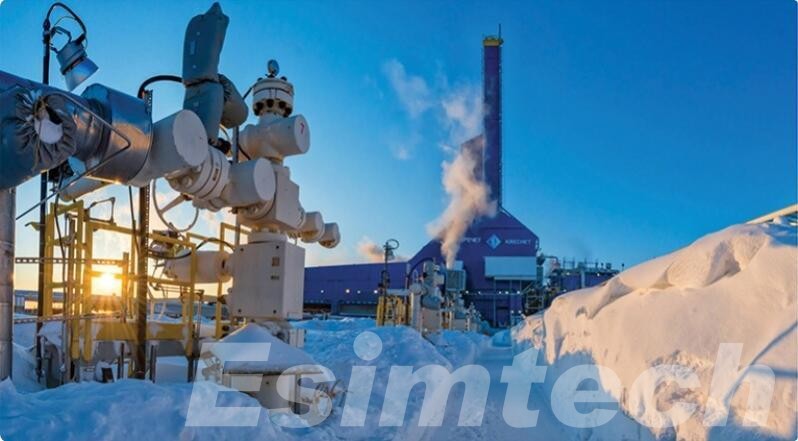
- Sand Control Technologies: Offshore wells often produce from unconsolidated formations, which can lead to sand production that damages equipment and impedes flow. To mitigate this, sand control technologies like gravel packing, expandable sand screens, and chemical consolidation are commonly used. These methods help maintain wellbore stability and ensure continuous, sand-free production.
- Flow Assurance Measures: In deepwater and ultra-deepwater environments, maintaining the flow of hydrocarbons from the well to the surface can be challenging due to low temperatures and high pressures. Flow assurance measures, such as the use of chemical inhibitors to prevent hydrate and wax formation, insulated flowlines, and even heated pipelines, are critical to ensuring that the flow of hydrocarbons remains uninterrupted.
Tailored Solutions for Unconventional and Extreme Environments
As the oil and gas industry explores more unconventional and extreme environments, such as Arctic regions or ultra-deepwater basins, well completion technologies continue to evolve. In these settings, the industry is increasingly turning to innovative approaches that combine the best elements of both onshore and offshore technologies:
- Arctic Completions: Wells drilled in Arctic environments must withstand extreme cold, ice, and permafrost. Specialized completion technologies, such as insulated casing strings and freeze-resistant wellheads, are used to ensure well integrity. Additionally, remote monitoring and automation are crucial due to the inaccessibility of these locations during certain times of the year.
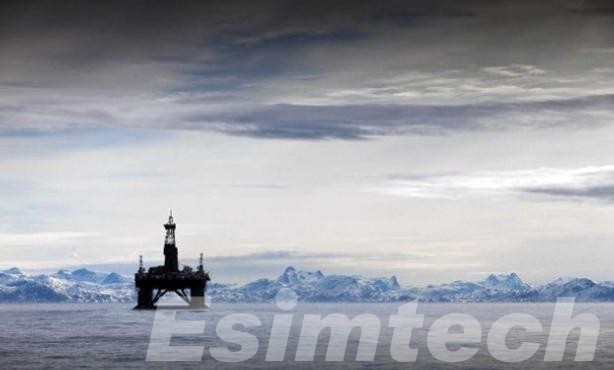
- High-Pressure, High-Temperature (HPHT) Wells: Both onshore and offshore, wells drilled in HPHT environments require advanced materials and completion techniques that can withstand extreme pressures and temperatures. This includes the use of high-strength steels, advanced elastomers for packers and seals, and specially designed completion fluids that maintain their properties under harsh conditions.
Integration of Digital Technologies
Across both onshore and offshore environments, the integration of digital technologies is transforming well completion practices:
- Digital Twins: The use of digital twins—virtual models of physical well assets—allows operators to simulate various completion scenarios and optimize well design before actual implementation. This technology enables predictive maintenance and real-time decision-making, reducing downtime and improving well performance.
- Intelligent Completions: Intelligent completion systems equipped with sensors and control devices provide real-time data on well conditions, allowing operators to adjust production parameters remotely. This capability is particularly valuable in offshore environments, where intervention costs are high, and real-time monitoring is crucial for maintaining safety and efficiency.
Well completion technologies need to be tailored to specific environments and reservoir conditions. Onshore wells typically use more conventional, cost-effective technologies, while offshore wells require advanced systems to manage deepwater and subsea challenges. As exploration and production expand into more difficult areas, innovative well completion technologies are provital for maximizing recovery, ensuring safety, and reducing environmental impact.
Summary
In summary, onshore wells use more conventional technologies, while offshore wells require advanced solutions to handle harsher conditions. As technology advances, well completion methods are becoming more efficient and adaptable, helping to maximize resource recovery and minimize environmental impact.
